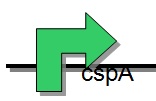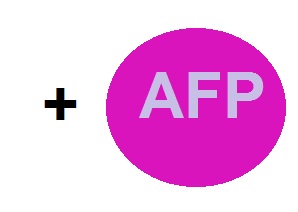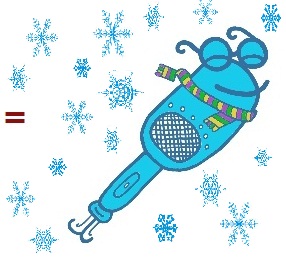Team:Mexico-UNAM-CINVESTAV/Project/Our project
From 2010.igem.org
| Line 4: | Line 4: | ||
'''PROJECT''' | '''PROJECT''' | ||
| - | First we organize a cold regulation system at post- | + | First we organize a cold regulation system at post-transcriptional level using a constitutive gene that ''E. coli'' has to cope with a sudden downshift (from higher temperature down to 15ºC up to 10ºC). Also we had added an antifreeze protein, in order to help the cell to prevent water from undergoing a freezing process creating strong hydrogen bounds and inducing a vitrification process rather than a normal crystalization process. In that way the cytoplasm and the cell membrane did not damage at freezing temperatures. This strategies may create new biobricks that can function as a “mini cold kit” to both synthesize proteins and build an ''E. coli'' mutant that allow us to work with it at low temperatures. Even we know about comercially available freeze induced vectors as the P. cold, we also know these vectors are patented. As we are trying to have a non patented assembly in the IGEM comunity we want to compare these vectors with ours. In that way our "mini cold kit" would be available for anyone. |
We are also trying to overcome other human issues like the plants and crops maintenance, in order to survive the cold weather countries like Canada, USA, Northern European countries and of course the frosts occurring in the north of Mexico and high mountains of country. In order to improve efficiency to our cold system we build four constructions to prove the different kind of regulation that the mechanism can allow. | We are also trying to overcome other human issues like the plants and crops maintenance, in order to survive the cold weather countries like Canada, USA, Northern European countries and of course the frosts occurring in the north of Mexico and high mountains of country. In order to improve efficiency to our cold system we build four constructions to prove the different kind of regulation that the mechanism can allow. | ||
| Line 23: | Line 23: | ||
<center>[[Image:Cb_to_sd.jpg]]</center> | <center>[[Image:Cb_to_sd.jpg]]</center> | ||
| - | For AFP we took fourteen sequences of the | + | For AFP we took fourteen sequences of the genus ''Zoarces sp.'' and make a multiple alignment. Of this we obtain a consensus sequence to choose from preferential codons of ''E.coli''. This final sequence was sent to synthesize with no promoter in. We try to construct the "mini cold kit" with the regulatory systems and the AFP just in front of them so we can express it with the cold shock inducible settings. In that way we ensure that the expression of the protein is controlled by the cold shock downshift. |
Other problematic we are overcoming with this mini cold kit is that the AFP's denatured at physiological temperatures. This give us a problem if we want to express the protein at high levels. So when we take the regulation system, which works better at low temperatures, we are avoiding the denaturing problem when the translation occurs. The regulatory system maintain the cell genetic machinery working well so we can express the protein and produce a lot of it. | Other problematic we are overcoming with this mini cold kit is that the AFP's denatured at physiological temperatures. This give us a problem if we want to express the protein at high levels. So when we take the regulation system, which works better at low temperatures, we are avoiding the denaturing problem when the translation occurs. The regulatory system maintain the cell genetic machinery working well so we can express the protein and produce a lot of it. | ||
Revision as of 04:58, 27 October 2010
PROJECT
First we organize a cold regulation system at post-transcriptional level using a constitutive gene that E. coli has to cope with a sudden downshift (from higher temperature down to 15ºC up to 10ºC). Also we had added an antifreeze protein, in order to help the cell to prevent water from undergoing a freezing process creating strong hydrogen bounds and inducing a vitrification process rather than a normal crystalization process. In that way the cytoplasm and the cell membrane did not damage at freezing temperatures. This strategies may create new biobricks that can function as a “mini cold kit” to both synthesize proteins and build an E. coli mutant that allow us to work with it at low temperatures. Even we know about comercially available freeze induced vectors as the P. cold, we also know these vectors are patented. As we are trying to have a non patented assembly in the IGEM comunity we want to compare these vectors with ours. In that way our "mini cold kit" would be available for anyone. We are also trying to overcome other human issues like the plants and crops maintenance, in order to survive the cold weather countries like Canada, USA, Northern European countries and of course the frosts occurring in the north of Mexico and high mountains of country. In order to improve efficiency to our cold system we build four constructions to prove the different kind of regulation that the mechanism can allow.
• Firstly we took the promoter with all the parts involved, from the promoter polymerase-binding zone, to the Downstream Box that is inside the protein DNA sequence.
• In a second construction we took all the regulation system except the promoter to define if another promoter different to the CspA can be regulated with the freeze system.

• We also have the CspA promoter alone so we can put it controlling another gene and see if this can function at low temperatures.

• For a final construction, we took the Cold Box, the UTR region and the Shine-Dalgarno sequence with the exception of the Downstream Box and the promoter. This one will help us to compare the expression of the proteins at low temperatures without the influence of the Downstream Box effect. We suspect that the proteins will have a minor expression rate than the one we could have from the second construction.

For AFP we took fourteen sequences of the genus Zoarces sp. and make a multiple alignment. Of this we obtain a consensus sequence to choose from preferential codons of E.coli. This final sequence was sent to synthesize with no promoter in. We try to construct the "mini cold kit" with the regulatory systems and the AFP just in front of them so we can express it with the cold shock inducible settings. In that way we ensure that the expression of the protein is controlled by the cold shock downshift. Other problematic we are overcoming with this mini cold kit is that the AFP's denatured at physiological temperatures. This give us a problem if we want to express the protein at high levels. So when we take the regulation system, which works better at low temperatures, we are avoiding the denaturing problem when the translation occurs. The regulatory system maintain the cell genetic machinery working well so we can express the protein and produce a lot of it.
Machinery that regulates the expression + AFP = "E.coldi"
"http://upload.wikimedia.org/wikipedia/commons/0/08/Walschaerts_motion.gif"

This is our final construction and is the one we are expecting to serve as an antifreeze system.
When we have many bacterias producing the AFP, the final objective is to purify the protein and put it above the crops to see if it can prevent the formation of frost on the leafs. If the AFP works well the frost will not be formed and the plant may carry out gas exchange so it will live at least much time.
 |
 |
 |
 |
 "
"





